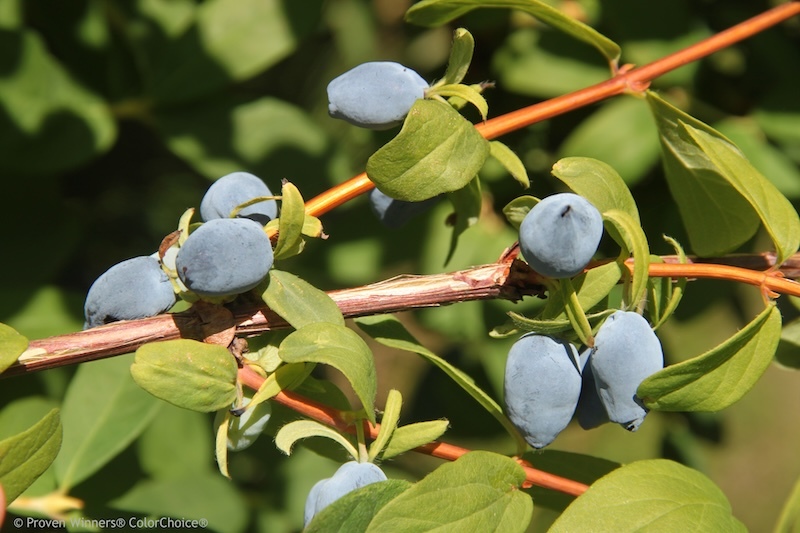Growing Honeyberry
Honeyberry is one of the most dependable and cold hardy fruit plants, although it is relatively unknown in the U.S. Honeyberries are native to East Asia and parts of Russia and produce a sizable crop of long, bluish berries with a taste somewhere between raspberries and blueberries. In Japan, these plants are called Haskaps and bloom about a month later than their Russian counterparts. The earliest types bloom in April, providing nectar for early pollinators in your garden.
Honeyberry can reach up to 8 feet wide, making them useful not only as an edible plant, but also as a privacy screen or hedging plant. This shrub is long-lived and can continue to crop for 40 years or more. Both male and female flowers are present on each shrub, but the flowers may open at different times. To ensure successful pollination, plant several varieties that bloom at the same time within 25 feet of each other.

Planting Honeyberry
Haskaps are highly adaptable and will grow well in most garden conditions, including clay, alkaline, and sandy soils. In northern climates, they require full sun, but in hot southern areas, they do better with some afternoon shade.
Space multiple shrubs 3-4 feet apart to allow for good air circulation and space to harvest around each plant. Unlike other berries (blackberries and raspberries in particular), Honeyberries do not sucker and are easy to maintain. Amend the soil well with 1-2 inches of organic compost at the time of planting to ensure the roots have room to spread out and establish well.

Watering Honeyberry
Keep the soil around Honeyberry moderately moist until the plants are well established, typically 2-3 years after planting. Ensure new plants receive about 1 inch of water per week, either from natural rain or supplemental watering. Using drip irrigation or soaker hoses allows for efficient and deep watering near the root zone, keeping the foliage dry and less likely to contract mildew or fungal diseases. Mulch at the base of the plants with organic material like shredded leaves, straw, or weed-free compost to retain moisture in the soil longer and suppress annual weed growth.
Fertilizing Honeyberry
Honeyberries respond well to light applications of fertilizer during their growing season. When new growth emerges in the spring, apply a slow-release fertilizer with a balanced ratio of NPK like a 5-5-5. Another application after the shrubs have finished fruiting in late June will help the shrubs bulk up their root systems and produce vigorous top growth. Do not fertilize after July 1 as the plants will not require extra nutrients as the temperatures cool toward the fall.
Pruning Honeyberry
Pruning is best done in early spring as new growth emerges, and then again after fruiting in early summer. Cut back any diseased, dying, diagonal, or dead branches cleanly to a main stem to remove any winter damage. A light tip pruning of branches after fruiting removes any naked stems that held fruit and promotes a dense form by encouraging side shoots.

Caring For Honeyberry in Pots
The smaller varieties of Honeyberry are ideal for growing in large planters. Make sure that the container has excellent bottom drainage and a diameter of at least 20 inches. Use an all-purpose potting mix with extra perlite for drainage. You can mix in some compost to support the nutritional needs of the plant.
Watering on a regular basis will increase the longevity of a potted Honeyberry, especially at the height of summer heat. Only allow the top 1-2 inches of soil to dry between waterings.
Winter Care For Honeyberry
Honeyberries planted in the ground do not typically require extra winter protection and are fully hardy to temperatures as low as -35 degrees F (-37 C). Honeyberry growing in containers may not tolerate such low temperatures and should be moved to a sheltered location during the winter in zones 3 and 4. A sheltered spot does not need to be indoors–it can be an unheated greenhouse or garage.
Sources:
“Edible Landscaping - Edible of the Month: Honeyberry.” The National Gardening Association. garden.org
“Honeyberries.” University of Wisconsin-Madison, Division of Extension. cropsandsoils.extension.wisc.edu
